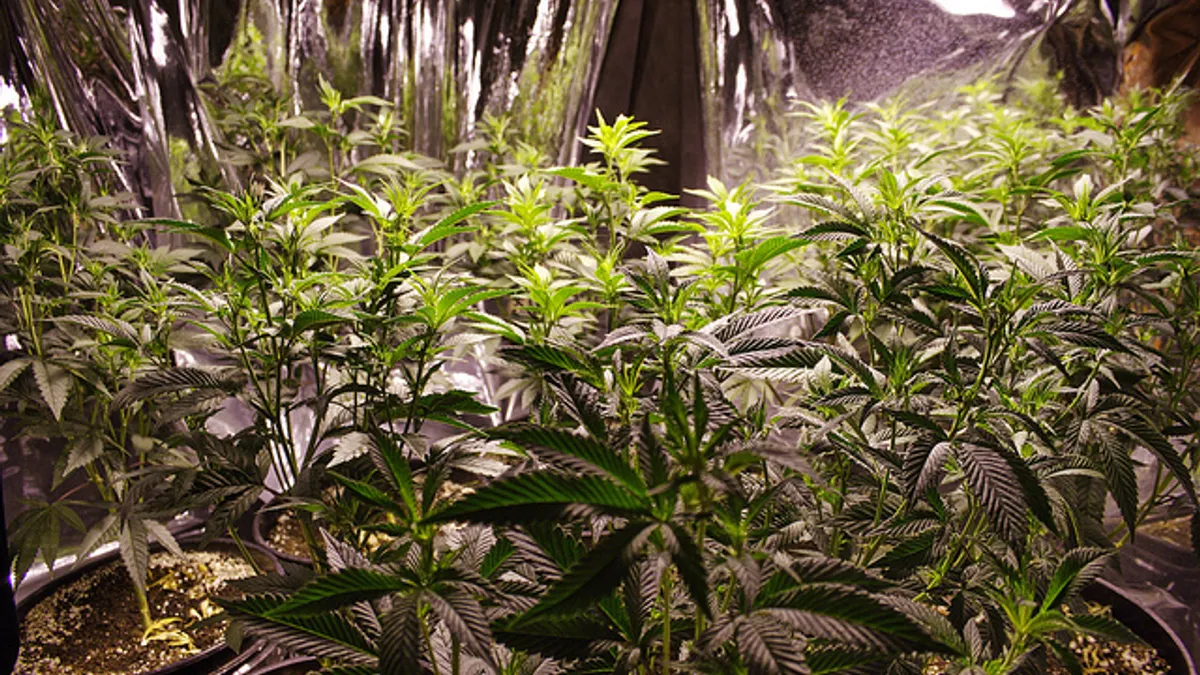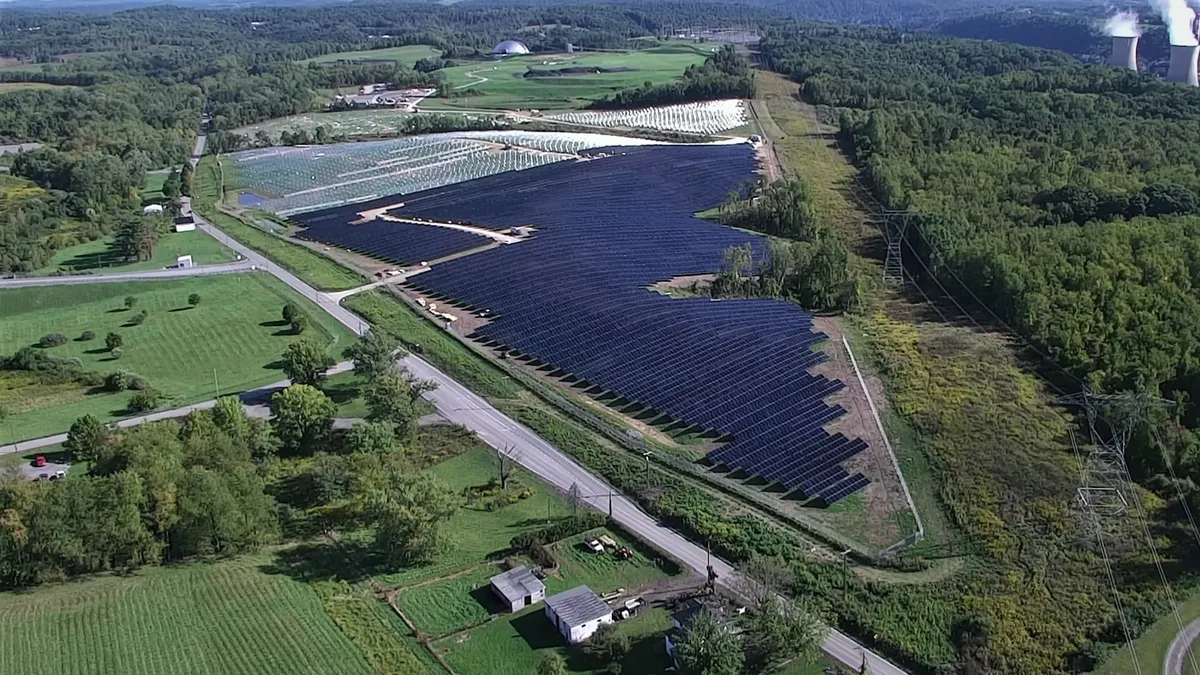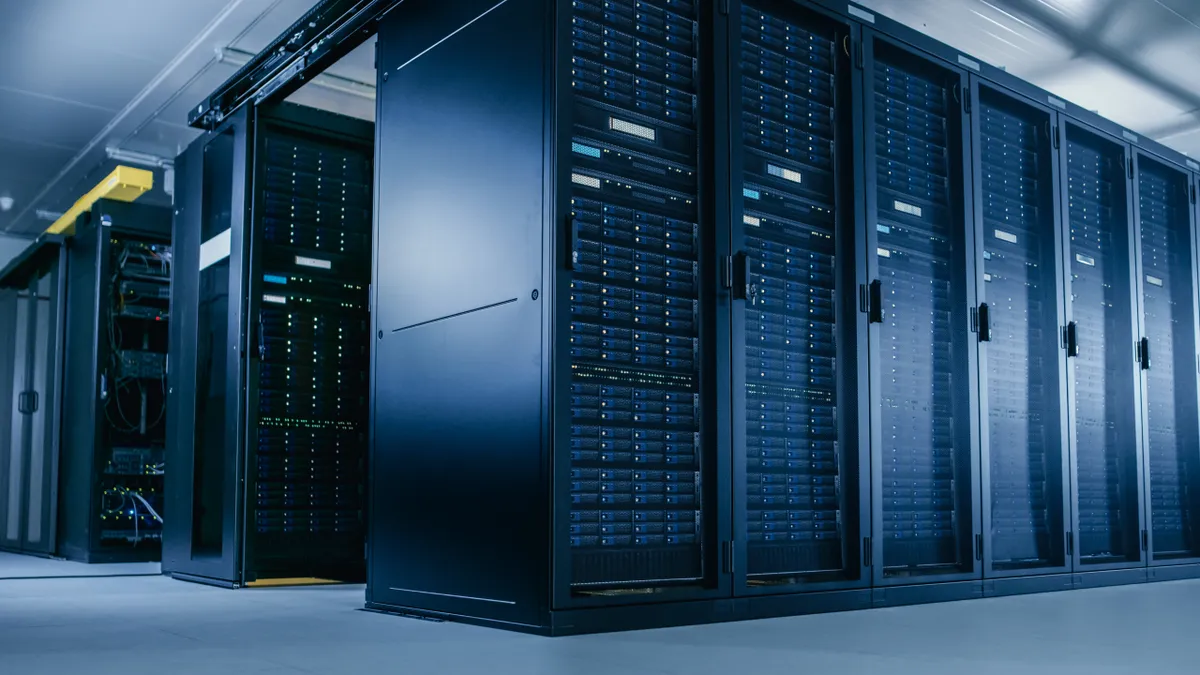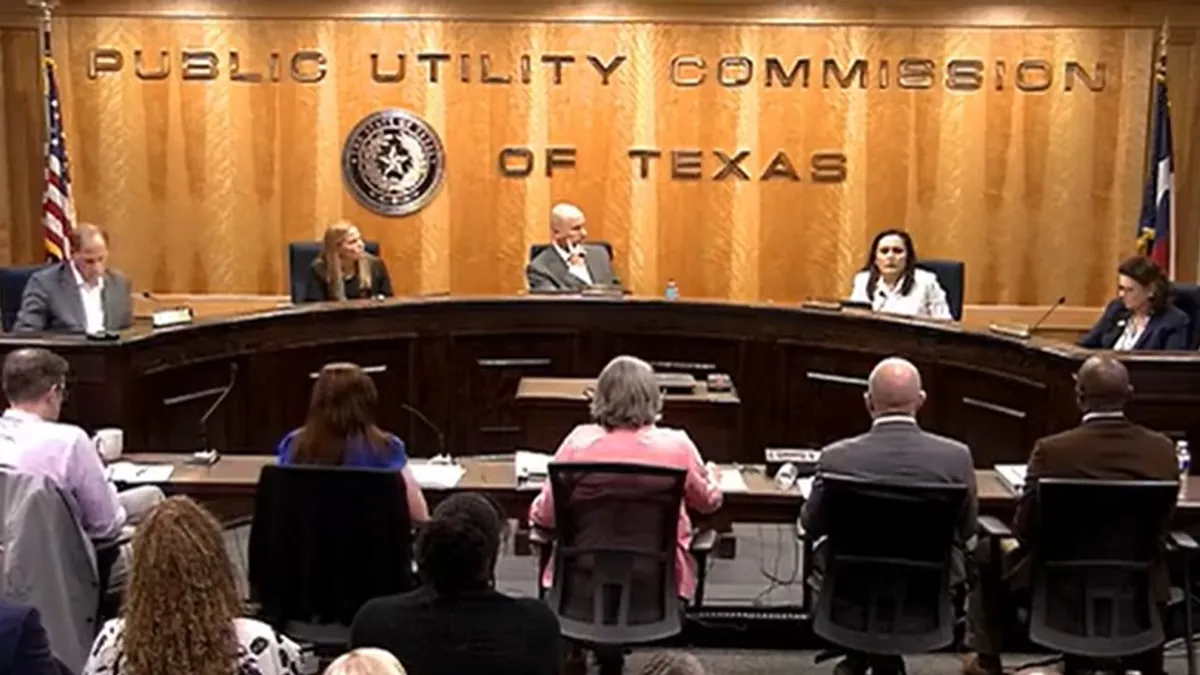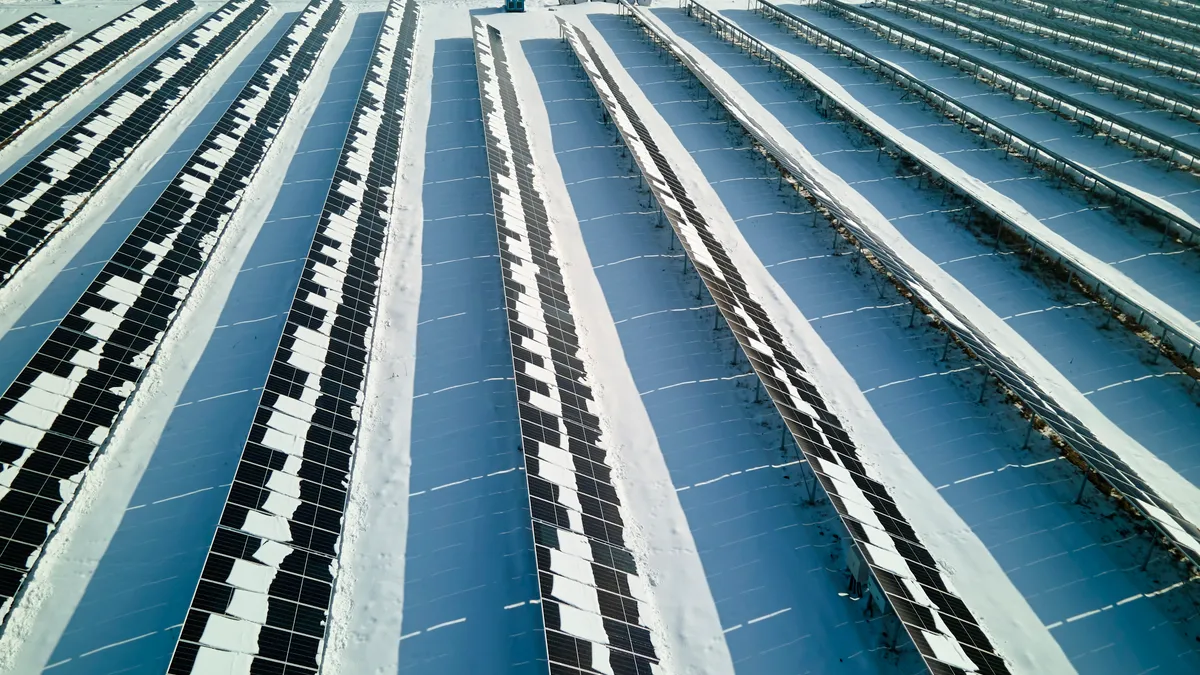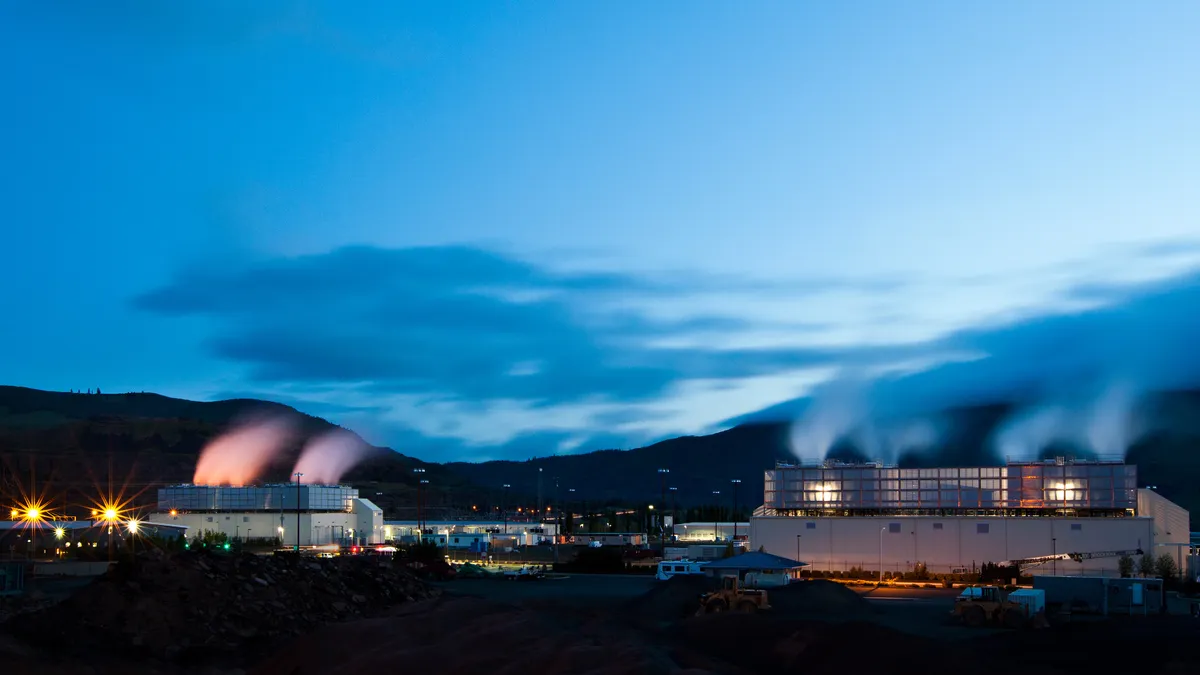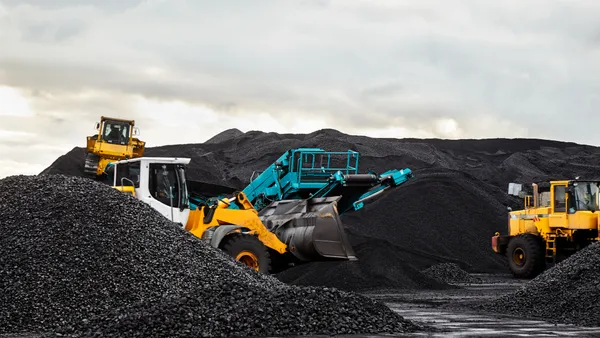Over half of the U.S. appears to be on the cusp of legalizing a highly energy intensive crop: marijuana. Could this shift in public policy spark an increase in electricity consumption?
Possibly. Indoor marijuana growing operations account for about 1% of all electric consumption in the U.S., according to a study by Evan Mills, a Lawrence Berkeley National Laboratory researcher (he did the study on his own time).
A typical indoor grow room for marijuana has the same power density – about 200 watts per square foot – as a data center, according to the study, published in 2012. Pot growers use about a third of the electricity used by all the data centers in the U.S., Mills estimates. In California, marijuana production accounts for about 3% of electric use, according to the study.
Growing pot requires heaters, carbon dioxide and ozone generators, carbon filters, dehumidifiers, fans and, of course, high intensity lights. One thing to remember: Indoor growing isn't just to avoid the police. It gives growers greater control over their crop.
To get a utility-specific scale of how much electricity marijuana growers use, in 2010, BC Hydro estimated that pot growers steal about $100 million a year in electricity.
Legalization brings new customer segment to utilities
This year, Colorado legalized marijuana for recreational use, adding a new segment to Xcel Energy's customer base: the marijuana grow house.
“More grow houses are opening up as we speak,” Gabriel Romero, Xcel spokesman, told Utility Dive. Xcel is treating marijuana growers the same as it treats any other customer segment, he said.
Denver has dozens of marijuana growing warehouses already. River Rock, which has medical marijuana dispensaries and a major warehouse in Colorado, spends about $21,500 a month on electricity. Another company spends about $100,000 a month, according to River Rock's owner.
River Rock expects its sales to “conservatively” increase by 400%. Not surprisingly, the company is looking for ways to cut its electric use by switching to greenhouses, which will use significantly less electricity than warehouses.
Efficiency rebates for marijuana growers?
Xcel has been working with the marijuana growers to develop a first-of-its-kind rebate program that aims to encourage growers to replace their older lighting equipment with more efficient models, Romero said. Xcel is offering rebates now on a case-by case basis, but expects to roll out the rebate program for the sector by early summer, he said.
“We're trying to get growers to use efficient lighting off the bat so we don't take as much of a hit to our system,” Romero said.
Xcel is designing the rebate to meet the needs of the marijuana growers, which have lighting requirements that are different from other customers, Romero said. The rebate program will be a model other utilities can use if growers move into their service territories.
It's too early to say exactly how the surge in marijuana growing is affecting Xcel's electric sales, but “it's going to have an impact,” Romero said. “The industry is still young.”
One of Evans' major concerns is that current forms of pot production are adding to greenhouse gas emissions. The city of Boulder, Colorado, has solved that problem by requiring pot growing to use renewable energy. This increases growing costs by about 20%.
Growing pot more efficiently
If Xcel's rebate program is an example, legalizing marijuana should make pot growing more energy efficient. "With the shift to legalized growing, many new opportunities – opportunities that already exist for others in the commercial horticulture sector – will help drive down the energy intensity of growing cannabis," Carol Stimmel, CEO of Manifest Mind, a consulting firm that is studying the issue, told Utility Dive. "Legalization is more likely to improve the energy-use scenario for cannabis growing, not worsen it."
The businesses that are growing pot legally are well funded, serious enterprises, according to Xcel's Romero. There will likely be an increased focus on developing energy efficient equipment for the business, he said.
Power use in America's marijuana capital
California's Humboldt County, America's marijuana capital, is considering levying an “excessive electricity use” tax in response to growers leaving the city of Arcata, which levied a similar fee late last year. The Arcata fee – ostensibly designed to help the city meet its greenhouse gas goals – is levied on homes using more than six times a baseline level of electricity.
Most likely because of pot growing operations, Humboldt County, which is served by Pacific Gas & Electric, has seen a steady rise in the average electric use by residential customers while average use in the rest of California has dropped slightly, according to a masters thesis by Jessica Arnold.
Marijuana legalization: What's next?
Already marijuana is legal in some form in 20 states and the District of Columbia. Now, at least 14 states are considering legalizing medical marijuana and 12 states and D.C. are considering decriminalizing marijuana use. Oregon and Alaska are the current battleground states on the issue.
The head of the National Organization for the Reform of Marijuana Laws believes California, Oregon, Alaska, Maine and Massachusetts are the most likely states to legalize pot next.
States have an age-old incentive to loosen their marijuana laws: increased state revenue. Colorado, for example, expects to see its revenue increase by about $134 million in the state's next fiscal year due to marijuana taxes alone.
Mills believes that indoor pot growing has made energy forecasts more difficult to make, and that legalizing marijuana won't automatically lead to increased energy efficiency among the growers.
“The unchecked growth of electricity demand in this sector confounds energy forecasts and obscures savings from energy efficiency programs and policies,” Mills wrote. “While criminalization has contributed to the substantial energy intensity, legalization would not change the situation materially without ancillary efforts to manage energy use, provide consumer information via labeling, and other measures.”
It's unclear exactly how utilities will be affected by lifting marijuana restrictions, but, at a minimum, it looks like their energy efficiency departments will have a new customer group to target.


